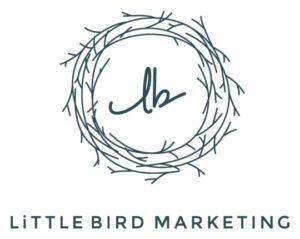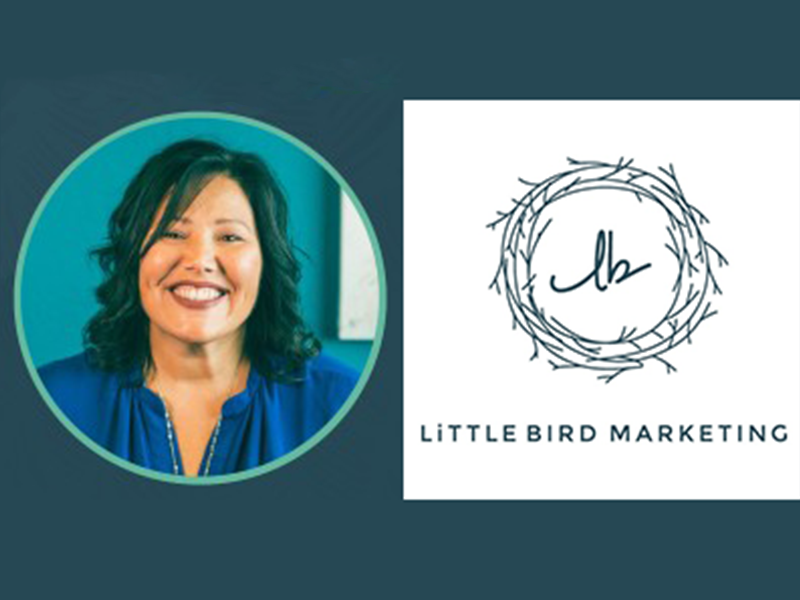 By Priscilla McKinney, CEO and Momma Bird, Little Bird Marketing, Joplin, Missouri, priscilla@littlebirdmarketing.com
By Priscilla McKinney, CEO and Momma Bird, Little Bird Marketing, Joplin, Missouri, priscilla@littlebirdmarketing.com
When was the last time you really looked at your website? Your website should be a powerful asset at the center of your inbound marketing efforts but, for most, it’s outdated and not fulfilling its purpose.
Consider Your Digital ROI
Your website should be more than an expensive online business card or sales brochure. It should be the full-time equivalent of a business development officer, and it should feel meaningful and relevant to your most ideal client. This means you should see the same, if not more, digital ROI than you experience from your face-to-face sales efforts.
It’s time to diagnose your website. Will some fine-tuning do, or will it need a complete overhaul? Let’s walk through a quick audit to help you take the next best step to not just save money in the short term, but also to set yourself up for making money through a predictable system of lead generation and revenue growth.
You can audit your website by asking four questions: 
Question 1: Is It Relevant?
The purpose of your website is to attract, engage, and delight visitors who happily convert into leads and ultimately into customers. However, we quickly become accustomed to looking at our own websites, forgetting to adopt the perspective of a first-time viewer.
An all-too-common mistake businesses make is building a website that is all about them. In reality, your website shouldn’t be about your company at all. It should be built specifically for your most ideal client. To do this, create buyer personas and, if you already created personas, start using them. If you have never put pen to paper about your most ideal client, then now is the time!
A buyer persona is a representation of your ideal customer.1 Not to be confused with basic demographics or your target audience, personas are semifictional characters based on detailed research of your actual customers. Unlike simple demographic information, buyer personas look deeper at your target audience to uncover the needs and wants of your ideal buyer. Buyer personas are at the base of your entire marketing strategy, and they’re a necessary component for every organization to have, big or small.
With good personas, your organization will have insights into questions like:
- What pains are you solving for your clients?
- What form of content best reaches your clients?
- How are your clients engaging with you?
No web copy should be written without your most ideal buyer in mind. Using a buyer persona will keep your website focused and relevant so that first-time visitors don’t become overwhelmed or unsure about whether they are on the right site. Confusion causes delay and inaction, and they will quickly click away to search for a company that understands their problems and offers clear, relevant solutions.
To optimize your website for your most ideal client, you should employ unique content and keywords aimed at attracting and engaging each specific buyer persona, which shows them that you’ve done your homework about what they need and how you can help. This is a necessary component for engaging a prospect and helping them through their buyer’s journey.
Question 2: Is It Optimized?
Search engine optimization (SEO) is essentially the process of using website design, code, content, and linking strategies to enable your site to organically show up on search engines such as Google. This means getting your site in front of potential clients, on their first search, without paying for ads.
How often do you find yourself searching for something on the internet? Pretty frequently, right? Google’s job is to figure out what your site is about based on two main factors: expertise and authority. Google wants their users to have a great experience, and that means bringing them quickly to the right site with the right content. Google wants to increase the chances of this happening, so it works hard to index sites based on what they are about and how good they are at what they deliver.
Writing great copy and keeping your site readable are the foundations of optimizing your site for search engines. If Google can quickly determine that you have a high level of expertise (e.g., you write about the same topic six ways ‘til Sunday and have for many years) and authority (e.g., other sites, including your own, reference things you say as fact), they will more frequently serve your site up to potential visitors. This is how SEO efforts determine the fate of your search appearance.
Will your website appear on the coveted first page of Google? Or, will it appear in no man’s land, otherwise known as page two of the Google search results? To answer this question, it’s crucial to take a deep dive into your website to evaluate its use of keywords, internal and external links, and load times.
SEO is about more than just search engine ranking. It is vital to have an SEO strategy that aligns with your business model, starting with an organized website. Even if your site is a visual masterpiece, a lack of proper organization can cause Google to rank your site lower than your competitor. As a part of your audit, take a comprehensive look at your digital assets. A few tasks include:
- Keyword Research. While you can certainly pay for professional keyword research, there are also inexpensive tools on the web such as Google Trends or SEMrush’s free Keyword Magic Tool. The People Also Ask tool from Google can help you understand what commonly searched phrases should inform your content strategy to help drive traffic. This should inform topics and headings for blogs and also for additional web pages.
- Linking Strategies. Once upon a time, Google rewarded websites with better ranking if other websites referred to them. This is a way they assessed authority on a subject matter. This is still true, but the great news is that you can also build your authority on a subject by linking to other pages within your own website. These are many little tasks you should always be doing as your content grows.
- Proper Navigation. Just like any successful trip, a map is an invaluable asset. But a confusing map is a nightmare. Likewise, look to your navigational buttons (NAV) and consider how the organization appears to the user. Pretend you didn’t build your site and that you’re trying to find a basic piece of information. Are you making it easy, with great organization? This task should be reviewed often, as companies tend to add pages to websites over time without updating the full navigation. Google also rewards a clean and understandable navigation system with better ranking—which increases the potential for more organic visitors to your site.
As digital media continues to eclipse the old media stalwarts of television, print, and radio as a primary advertising format, SEO is crucial for lead generation and must be at the forefront of any strategy to avoid getting left in the digital dust.
Question 3: Is It Easy?
Everyone loves an easy button. Life is already complicated, so cloaking your content in industry jargon that ultimately confuses and drives away your potential customers is a waste of digital space. Be straightforward. Tell your visitor why you are the best solution to their problems, and refrain from making them Google the definition of every other word—because they won’t. Ask yourself, “If I didn’t know the industry, would I know what my website is talking about?”
While a great headline or clever tagline often makes the CEO happy, sometimes the prospect is left out of the double entendre or clever turn of phrase. Don’t play hard to get. The elusive and mysterious gimmick will get you nowhere quickly. Your potential leads shouldn’t have to jump through hoops to find the answer to their problems. In fact, they won’t jump through hoops to give you their business. Give them the information they need to progress in their buyer’s journey, and allow them to move forward with you as their guide. Again, confusion causes delay and, when it comes to sales, delay means lost revenue.
Another way to respect people’s time is to have your page load quickly. Don’t frustrate your next potential customer with long load times. We all got rid of our AOL CDs with vigor, and now we want everything immediately. A website that takes a long time to load creates disinterest, and your bounce rate will skyrocket. While your bounce rate is skyrocketing, your revenue is plummeting.
Note to self: When checking the load time of your website, be sure to use a reputable third party, or use a computer where you have never visited your site before. (This can be accomplished by clearing the cache on your own computer.) If your site is slow to load, you may never know this if your computer is caching the images and serving them up to you from memory and not from the current responsive rate.
Question 4: Is It Actionable?
They visited your site. Great. What now? Evaluating your website for proper placement of meaningful calls to action is critical if you want your website to create action. If someone can look at your site, find it understandable and meaningful, but still never be challenged to do something about it, revenue is not a sure thing.
Where Do You Go from Here?
With this simple four-question audit, your next steps should be clear. Either you’ll find yourself patching some minor potholes or undergoing major construction to make sure your website is more than just an expensive business card. Make your website relevant, optimized, easy, and actionable. These are the basic building blocks for a website that serves as a twenty-four-seven marketing funnel that plays a key role in sustainable lead generation for your business.
- https://blog.littlebirdmarketing.com/knock-knock-do-you-know-who-is-there?__hstc=190569908.9a6
6c642fcae86355f2dabe369bb51df.1600759654741.1
600759654741.1600759654741.1&__hssc=190569908.1.1600759654742&__hsfp=1248719317)
Do You Like This Article?
 You may be interested in this additional resource by this article’s author Priscilla McKinney, which can be found in the QRCA Qualology Learning Hub.
You may be interested in this additional resource by this article’s author Priscilla McKinney, which can be found in the QRCA Qualology Learning Hub.
Webinar: The Cobbler’s Children: Qualitative Research to Market Your Qualitative Agency

